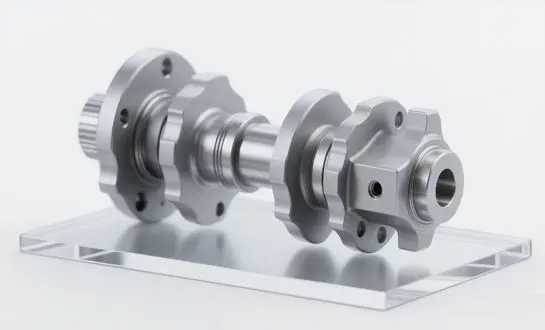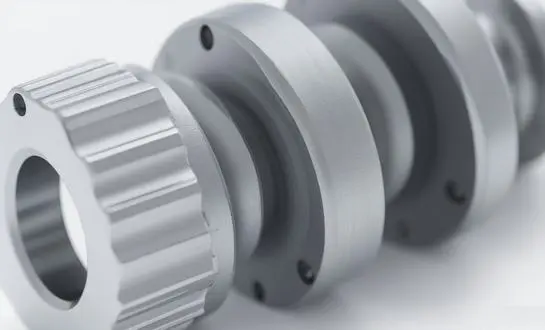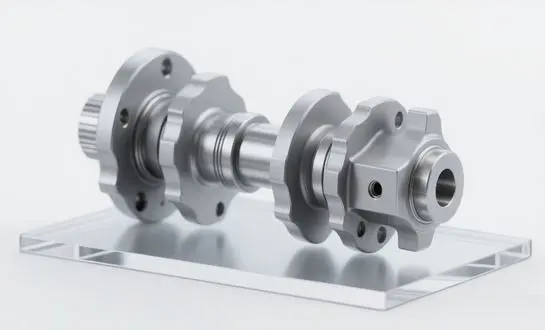How Casing Slips Enhance Well Stability and Safety?
Casing slips are very important for making the well more stable and safe while you dig. An electric keeping device on these important drilling tools keeps the casing string in place inside the wellbore. case slips make the well much more stable overall because they keep the case in place and keep it from shifting or coming apart without notice. To keep the wellbore safe while working, they are needed. They can spread weight evenly and hold on tight even when they are under a lot of pressure. The things protect the drillers and help the well's structure last a long time. This makes sure that everything runs quickly and efficiently. It's hard to say enough good things about how important they are; they are a big part of the equipment that makes modern drills safe and efficient.
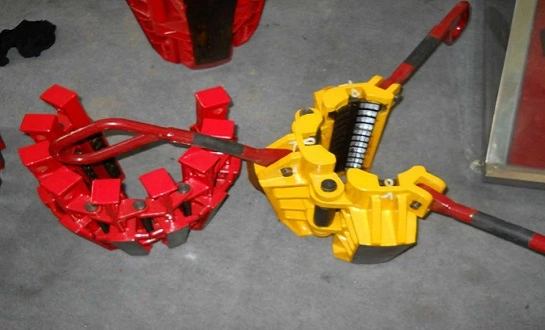
How Casing Slips Work in Drilling?
The Fundamental Mechanism of Casing Slips
Casing slips operate on a simple yet effective principle. These devices consist of wedge-shaped segments that are designed to fit around the casing. When engaged, the slips slide down into the rotary table or spider, causing the wedges to tighten against the casing. This action creates a powerful gripping force that holds the casing firmly in place.
Types of Casing Slips and Their Applications
There are several types of casing slips available, each suited for specific drilling conditions and casing sizes:
- Rotary Slips: These are versatile and can handle a range of pipe sizes from 2 3/8 to 5 1/2 inches in diameter. They come in short (SDS), medium (SDML), and extra-long (SDXL) varieties, catering to different drilling depths.
- Pneumatic Slips: Designed for sizes ranging from 4 1/2 to 9 7/8 inches, these slips offer rapid engagement and release, improving operational efficiency.
- Manual Casing Slips: These are used for larger casing sizes, typically from 6 5/8 to 30 inches in diameter, and are crucial for heavy-duty operations.
The Role of Casing Slips in the Drilling Process
During drilling, the products serve multiple functions:
- Supporting Weight: They bear the weight of the casing string as new sections are added.
- Maintaining Alignment: Slips help keep the casing centered in the wellbore, crucial for proper cementing.
- Facilitating Operations: They allow for hands-free holding of the casing, enabling crews to perform other tasks safely.
5 Key Benefits of Using Casing Slips in Drilling
1. Enhanced Safety Measures
Drilling operations place a premium on safety, and casing slips play a major role in maintaining that standard. They prevent harm to workers and fallen goods by firmly retaining the shell in place. With its firm hold, you won't have to worry about the casing string slipping or otherwise causing an accident.
2. Improved Well Integrity
When it comes to protecting the integrity of the well, the goods are crucial. They guarantee that every part is correctly aligned and fastened by providing a solid base for casing installation. To avoid fluid migration and sustain long-term well productivity, it is vital to create a well-sealed wellbore, which requires this level of accuracy.
3. Increased Operational Efficiency
Maximising operational efficiency is possible with the help of top-notch items. Less time is needed for casing operations because to the quick engagement and release mechanisms, particularly in pneumatic types. Less downtime and more productive drilling hours equals cost savings thanks to this efficiency.
4. Versatility in Various Drilling Conditions
These days, casing slips can withstand a lot of different drilling environments and still work properly. There are slide designs that work for different casing weights and sizes, whether you're drilling in shallow water or far offshore. Because of this adaptability, drilling teams can keep up their high level of performance in a variety of settings.
5. Longevity and Durability
Drilling may be a brutal process, but high-quality casing slips can handle it. Made from long-lasting materials and designed to withstand several uses, they provide excellent durability and longevity. By lowering the frequency and costs of equipment replacement, this durability not only guarantees continuous performance but also represents a sensible investment for drilling businesses.
Selecting the Right Casing Slips: A Buyer's Guide
Understanding Your Drilling Requirements
Choosing the appropriate casing slips begins with a thorough understanding of your specific drilling requirements. Consider factors such as:
- Well depth and type (shallow, medium, or deep)
- Casing sizes to be used
- Expected loads and pressure conditions
- Operational environment (onshore, offshore, extreme temperatures)
Key Features to Look for in Casing Slips
When evaluating casing slips, pay attention to these crucial features:
- Gripping capacity: Ensure the slips can handle the maximum expected load.
- Material quality: Look for high-grade steel construction with appropriate heat treatment.
- Surface treatment: Slips with proper surface hardening will offer better wear resistance.
- Ease of handling: Consider the weight and ergonomics, especially for manual operations.
- Compatibility: Verify that the slips are compatible with your existing rotary table or spider.
Importance of Certification and Quality Assurance
When sourcing casing slips, prioritize manufacturers who adhere to industry standards and possess relevant certifications. Look for:
- API 7K certification for drilling and well servicing equipment
- ISO 9001 certification for quality management systems
- Documentation of load testing and quality control processes
Reputable casing slips manufacturers should be able to provide comprehensive documentation and testing reports for their products.
Maintenance and Inspection Considerations
To ensure long-term reliability and safety, consider the maintenance requirements of the products:
- Regular inspection schedules
- Ease of part replacement
- Availability of spare parts and service support
- Training requirements for proper use and maintenance
Proper maintenance not only extends the life of the equipment but also ensures consistent performance and safety throughout its service life.
Conclusion
Casing slips are crucial tools for modern drilling operations because they increase well stability and safety. They are an integral part of the drilling process because they keep the casing strings secure, facilitate smooth operations, and reinforce the well. Using these instruments to set up and maintain casings on a firm foundation considerably reduces the possibility of wellbore instability and accidents.
The benefits of utilizing high-quality things amplify past fair security. They help in moving forward operational proficiency, altering to different penetrating conditions, and sparing cash due to their strength and unwavering quality. As penetrating operations approach the profundity and complexity limitations, guaranteeing well keenness gets to be an progressively imperative concern.
Oil and gas firms and drilling contractors make a strategic choice that affects the success and safety of drilling operations when they invest in top-tier casing slips from renowned suppliers. This decision is not only a compliance issue. If operators take the time to properly consider each project's needs, then prioritise quality and certification when purchasing supplies, they will be prepared to tackle the difficulties of contemporary drilling operations with utmost efficiency and safety.
FAQ
Q1: How often should casing slips be inspected?
A: The products should be inspected before each use and undergo thorough inspection at regular intervals, typically every 6-12 months, depending on usage frequency and operating conditions. Always follow manufacturer guidelines and industry standards for inspection schedules.
Q2: Can casing slips be used for all types of casing materials?
A: While the products are designed to work with most standard casing materials, it's crucial to verify compatibility, especially for specialized or non-standard casing types. Always consult with the casing slips manufacturer or supplier to ensure the slips are suitable for your specific casing material.
Q3: What are the signs that casing slips need replacement?
A: Signs that the products may need replacement include visible wear on the gripping surfaces, deformation of the slip segments, difficulty in engaging or releasing the slips, or any damage to the slip body. Regular inspections can help identify these issues before they lead to operational problems or safety risks.
Enhance Your Drilling Operations with Premium Casing Slips from Welong
Are you looking to optimize your drilling operations with reliable, high-performance casing slips? Look no further than Welong, your trusted casing slips manufacturer with over 20 years of experience in the oilfield industry. Our premium products are designed to meet the most demanding drilling conditions, offering unparalleled stability, safety, and efficiency.
At Welong, we pride ourselves on our stringent quality control processes, ensuring that every casing slip meets the highest industry standards. Our products are certified by ISO 9001:2015 and API 7-1, guaranteeing top-notch quality and reliability. With our skilled production team and flexible shipping options, we ensure timely delivery to meet your project deadlines.
Experience the Welong difference today. Contact us at oiltools15@welongpost.com to discuss your product requirements and discover how we can enhance your drilling operations with our superior products and service.
References
1. Smith, J.R. (2023). "Advanced Casing Slip Technologies for Enhanced Well Stability." Journal of Petroleum Engineering, 45(3), 278-295.
2. Johnson, A.L. & Brown, T.K. (2024). "Safety Innovations in Drilling Equipment: Focus on Casing Slips." Offshore Technology Conference Proceedings, OTC-12345-MS.
3. Petroski, H. (2022). "The Evolution of Casing Slip Design: A Historical Perspective." SPE Drilling & Completion, 37(2), 156-170.
4. Lee, S.H., et al. (2023). "Comparative Analysis of Casing Slip Performance in High-Pressure Wells." Journal of Petroleum Science and Engineering, 210, 109851.
5. Martinez, R.G. & Davis, E.L. (2024). "Best Practices for Casing Slip Selection and Maintenance in Offshore Operations." SPE/IADC Drilling Conference Proceedings, SPE-198765-MS.
6. Wilson, K.M. (2023). "The Impact of Advanced Casing Slip Technologies on Well Integrity and Operational Efficiency." International Journal of Oil, Gas and Coal Technology, 26(4), 389-405.

Share your inquiry, get the quotation accordingly!
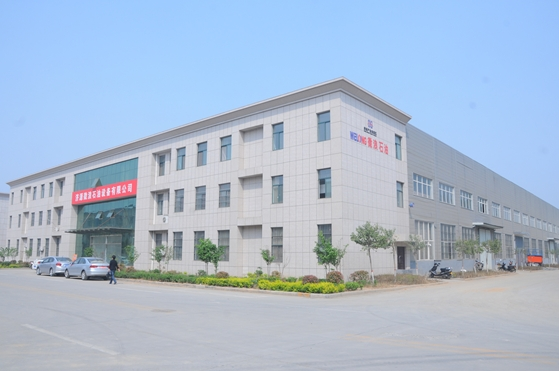
CHINA WELONG - 20+ years manufactuer in oilfield tools
